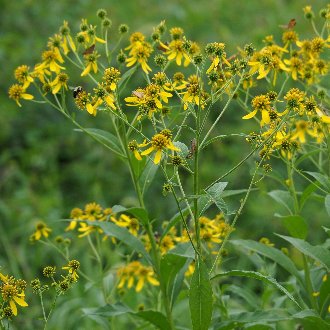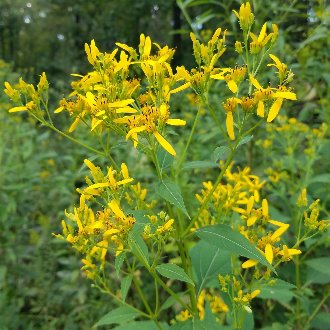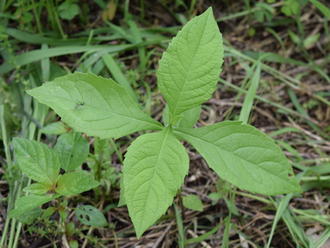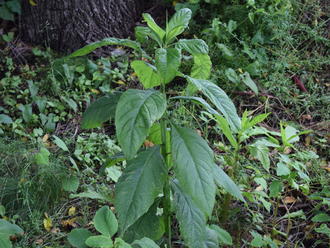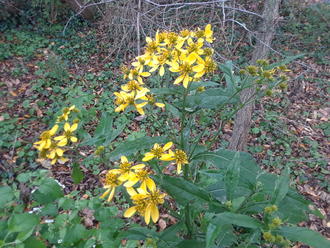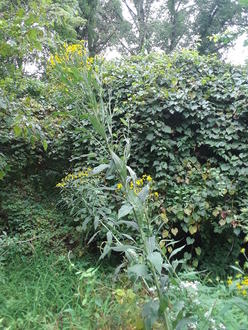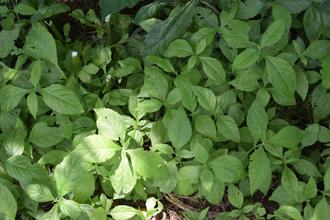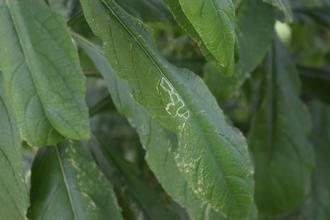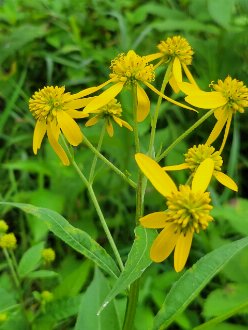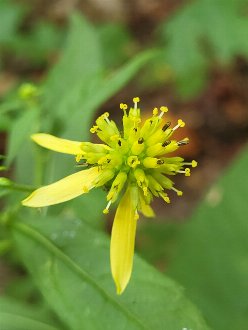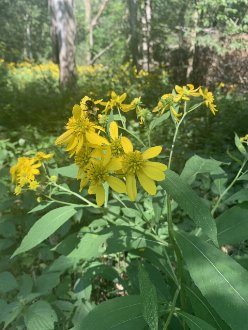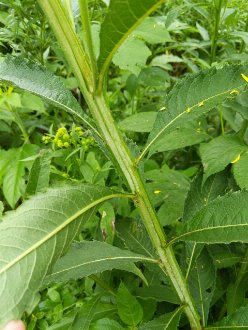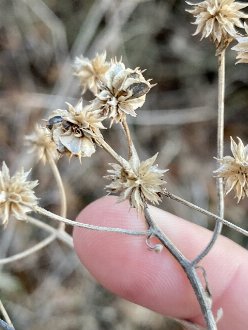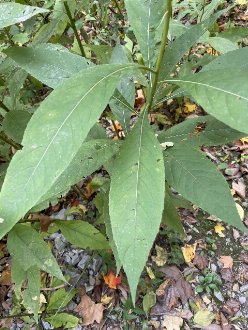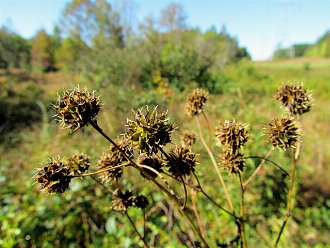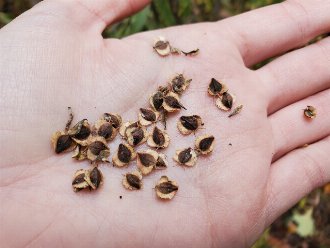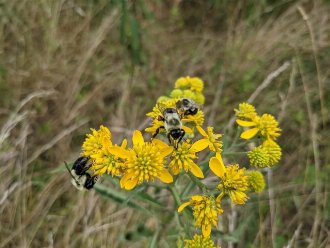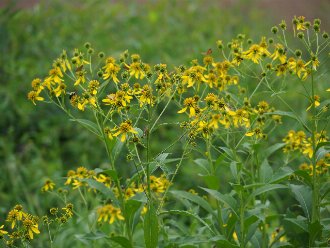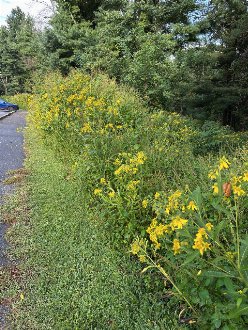Wingstem (Verbesina alternifolia (L.) Britton ex Kearney)
Also known as yellow ironweed.
↑Summary
A tall perennial native to North America, with showy, yellow flowers.
↑Range - Expand
| Legend | Color |
| Native | |
| Native or Not Present | |
| Native or Expanded | |
| Expanded or Not Present | |
| Native or Expanded or Not Present |
This map is based on our research. We have checked its accuracy to Level 3 ecoregions. Although this plant occurs somewhere in each of these regions, it may only occur in a small part of some or all of them.
↑Description & Identification
A perennial plant to 2.5m (~8ft) tall, with conspicuously winged stems, unbranching until the inflorescence, growing straight and supporting their own weight.
Flowerheads are numerous (10-100 per stem), consisting of daisy-like compound flowers with relatively few yellow rays and numerous greenish-yellow disk florets. Flowerheads often have raggedy, irregular appearance with many flowers holding onto as few as 2 ray florets. Although the foliage is very different, flowerheads resemble a smaller version of Rudbeckia laciniata, which blooms earlier and sometimes occurs in similar habitats.
Although plants nearly always show alternate leaf arrangement at maturity, newly sprouted and young first-year plants can have opposite leaves.
↑Similar Plants
↑Habitat
Found in moist, sunny to lightly shaded areas in rich soil. Found in moist prairies and wet meadows, especially those adjacent to woodlands, and in open deciduous forests, and clearings and borders in those forests, including edges with meadows or grassy openings, and those with bodies of water. Occasionally found in anthropogenic habitats, including moist and/or partly-shaded areas along roadsides.
Prefers moist to mesic conditions in most of its range, but can tolerate dry-mesic conditions in regions with high rainfall. Particularly common in floodplains, bottomland stream corridors, and near bodies of water, but also found in mesic upland forests, ranging into dry-mesic sites at high elevations in the southern Appalachians where rainfall and cloud cover is high. Usually limited to base-rich (calcium and magnesium) soils high in organic matter, but can also be found on sand and gravel bars of streams. Becomes rare in the southeastern coastal plain, and absent from most of this region.
↑Life Cycle
Wingstem often reaches over half its full height during the first year, and blooms and has good seed production even in the first year. However, it is perennial and will often grow taller in subsequent years. It often forms colonies with numerous stems.
The seeds mature late in fall. They are realtively large and have both wings and awns. Wind carries them only a small distance from the parent plant; they may also be carried farther distances by sticking to animals.
Seeds germinate after a period of cold dormancy. The germination rate is high and newly-germinated plants are often able to push up through some competing vegetation, but they must reach some direct sunlight to survive.
↑Uses
Uncommonly used in gardening, primarily in native plant gardens and wildflower meadows. Its large size and aggressive nature makes it unsuitable for some garden settings.
↑Related Plants
There are numerous Verbesina species in North America, but most have more limited distributions. Some are locally abundant and overlap with this species' range.
↑Links & External Resources
• Verbesina alternifolia (Wingstem) | Illinois Wildflowers (About This Site)
• Verbesina alternifolia (Wingstem) | USDA PLANTS Database (About This Site)
• Verbesina alternifolia | Go Botany (About This Site)
• Wingstem | iNaturalist (About This Site)
• Verbesina alternifolia (Wingstem) | Missouri Botanical Garden Plant Finder (About This Site)
• Verbesina alternifolia | Biota of North America Project (BONAP) (About This Site)
• Verbesina alternifolia | NatureServe Explorer (About This Site)
• Verbesina alternifolia | Flora of North America (About This Site)
• Verbesina alternifolia | Missouri Plants (About This Site)
• Wingstem | Maryland Biodiversity Project (About This Site)
• Verbesina alternifolia (L.) Britt. ex Kearney (Wingstem) | Digital Atlas of the Virginia Flora (About This Site)



